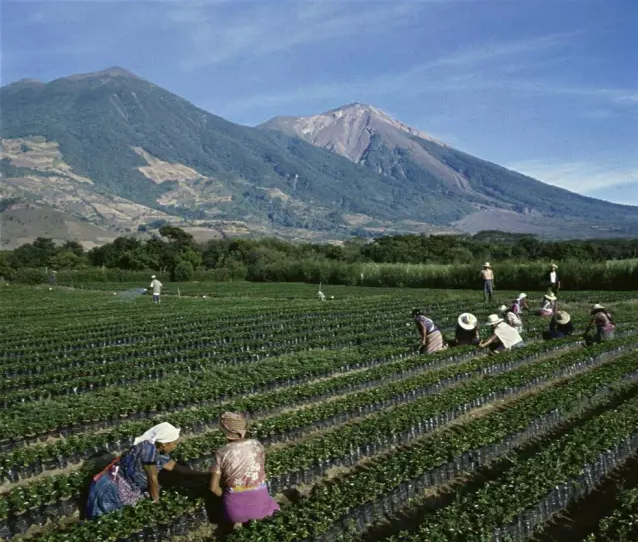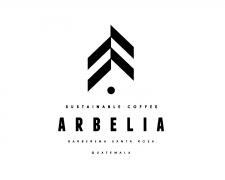Greengo Manor in Burundi knows more about Kibingo Coffee Fruit Central processing Station
Greengo Manor, Burundi
Kibingo central processing station
The Kibingo central washing treatment plant is located in the Kayanza commune in northern Burundi. The station itself is located 1893 meters above sea level. The nearby mountain farms that provide washing treatment plants are between 1700 and 1900 meters above sea level. Gibingo serves 3553 registered coffee growers on 18 hills in the region. In 2016, these producers had a total of 1,010,062 trees. Each producer has an average of 284 trees.

The treatment plant is equipped with 10 fermentors, 2 soaking tanks and a drying field, 165 drying tables and 4 pre-drying tables. Kibingo can process 750000 kilograms of cherries a day.
When coffee cherries are picked, the picking team classifies coffee cherries. This is essential for fine processing, and beans are less damaged. The cherry peel is mechanically removed during pulping. Next, the sticky parchment will be dried and fermented for 12 hours. After the fermentation is completed, the parchment enters along the washing and grading channel. Finally, the high-quality coffee is soaked for another 24 hours to remove the remaining mucus before drying. Here, the second batch of pickers check the wet parchment and remove the defective beans. A few hours later, the parchment was moved to the drying table. According to the weather conditions, the water content will reach 12% in about two weeks.

Member
Kibingo CWS has 3553 registered peasant members distributed on 18 hills or hills in Kayanza province. All producers registered at the Greengo washing station are made up of 30 people and are led by farmers. The leader acts as a spokesman to promote communication and organization with the washing station.
In Burundi, wet mills can reach farmers within 3 kilometers. If the laundry station is too far away, the producer will sell to the middleman, often at a disadvantage. To prevent this, Kibingo and other Greenco coal water mixtures have collection centers. These centers allow them to reach farmers nine kilometers from the wet mill. This is a huge benefit for producers because they don't need a lot of cherries. At the same time, shorter distances help maintain quality.
At the cleaning station, farmers can get organic fertilizer from converted coffee grounds. To promote farm transformation, producers can get low-cost subsidized coffee seedlings at laundry stations. Each station has its own nursery.

Kayanza
It is one of the best coffee growing areas in Burundi. Coffee farm is located on the plateau, rich in soil and volcano. However, the best growth conditions alone are not enough to produce high-quality coffee. In order to get top coffee, a skilled and professional laundry station manager is essential. They supervise the implementation of good economic practices and farmer education and work with producers to ensure that they have access to the necessary tools. They also help farmers identify and implement practices that best suit the specific growth conditions of the plantation.
Is a company that supervises and arranges cleaning stations in the province of Kayanza, Burundi. It provides all the support on the production chain to washing stations and manufacturers. They started their work in 2015 and immediately ended with 11 victories in that year's Cup of Excellence. Currently, there are 13 washing stations in Kayanza in northern Burundi. The overall impact of these 13 CWS extends to more than 40000 coffee producers. The producers are supported by CWS managers, who are all young agronomic engineers.

Support the production community
Working with young graduates has proved to have a variety of advantages. They all have access to computer systems. This seems like a detail to us, but it greatly simplifies the flow of information between the laundry station and the Greenco. In addition, they have a new and systematic approach to coffee production and processing, with knowledge of the latest agricultural practices. Agronomists received additional training from ONG Kahawatu on best agricultural practices (BAP). During the off-season, they provide agronomist assistance to about 4000 farmers who supply cherries to Greenco CWS to prepare for the next harvest.
In addition to improving quality and productivity, Greenco is committed to improving the socio-economic and environmental conditions around the washing station. All washing stations have UTZ and 4C certification. One of their priorities is to build an efficient supply chain around CWS. Greenco bought 93% of the cherries directly from farmers through the collection center. In this way, they raised the prices of producers' farms.
Another socio-economic challenge is youth unemployment. The national youth unemployment rate is close to 50%. In Greenco, young graduates receive decent salaries and benefits (housing, motorcycles, health care) and real career prospects.
In addition to training agricultural practices, Greenco also provides training for farmers' organizations in all aspects of society. Coffee families understand gender equality, financial planning, family planning, breastfeeding, etc.
On the environmental front, Greengo has equipped all washing stations with water treatment facilities and solar panels and batteries. Solar panels provide energy for computers, lighting and smartphones.
Burundi is a land of great coffee traditions. Its high altitude, thousands of hills, volcanic soil and abundant rainfall provide ideal conditions for the production of special and very exotic coffee. There are no large plantations in Burundi. Coffee is actually grown on small family farms, while traditional cherries are sent to the nearest coffee washing station.

The Kayanza area from this coffee is located in the north of the country, near the Rwandan border. Kayanza is mostly called the water source of the Nile. A unique type of water used to process coffee cherries at a nearby wet mill. This may be one of the many reasons why this coffee is separated from its competitors in the famous "Excellence Cup" every year.
Apart from everything, 2015 is definitely the best year to taste Burundian coffee. An explosive acidity, a devastating body, and the killer aftertaste of a tentative coup coffee, which Burundi will offer this year.
About the coffee estate.
The Kibingo wet mill was built in the mid-1980s. It collects cherries from miniature plantations around stations on high-altitude hills near the Nile River in the Congo.
In the cup, this special coffee has a lot of caramel floral citrus flavor. The sweetness of its balanced toast flavor won it the 2013 Presidential Cup.
Important Notice :
前街咖啡 FrontStreet Coffee has moved to new addredd:
FrontStreet Coffee Address: 315,Donghua East Road,GuangZhou
Tel:020 38364473
- Prev

Arbelia Farm of Abelia Manor in Guatemala introduces coffee from Farrakhan Nice Plain.
For the exchange of professional baristas, please follow the coffee workshop (official Wechat account cafe_style) French Hannis Fraijanes Farrakhan Nice Plain area / average temperature 12 ℃-26 ℃ Coffee Flavor: elegant aroma, mild and mellow overall texture, with special and pleasant acidity. The volcanoes in the Fahannis area are quite high above sea level and the soil is rich in pumice, Farrakhan.
- Next

Chakaya San Diego Cooperative Manor, Guatemala [Finca San Isidro Chacaya]
For the exchange of professional baristas, please follow the coffee workshop (official Wechat account cafe_style). Lake Attilan is one of the four major volcanic coffee areas in Guatemala. Atitlan. The mountainous Atitlan region gives coffee a more leisurely personality but no less flavor than Huehuetenango. Atitlan
Related
- Does Rose Summer choose Blue, Green or Red? Detailed explanation of Rose Summer Coffee plots and Classification in Panamanian Jade Manor
- What is the difference between the origin, producing area, processing plant, cooperative and manor of coffee beans?
- How fine does the espresso powder fit? how to grind the espresso?
- Sca coffee roasting degree color card coffee roasting degree 8 roasting color values what do you mean?
- The practice of lattes: how to make lattes at home
- Introduction to Indonesian Fine Coffee beans-- Java Coffee producing area of Indonesian Arabica Coffee
- How much will the flavor of light and medium roasted rose summer be expressed? What baking level is rose summer suitable for?
- Introduction to the characteristics of washing, sun-drying or wet-planing coffee commonly used in Mantenin, Indonesia
- Price characteristics of Arabica Coffee Bean Starbucks introduction to Manning Coffee Bean Taste producing area Variety Manor
- What is the authentic Yega flavor? What are the flavor characteristics of the really excellent Yejasuffi coffee beans?

